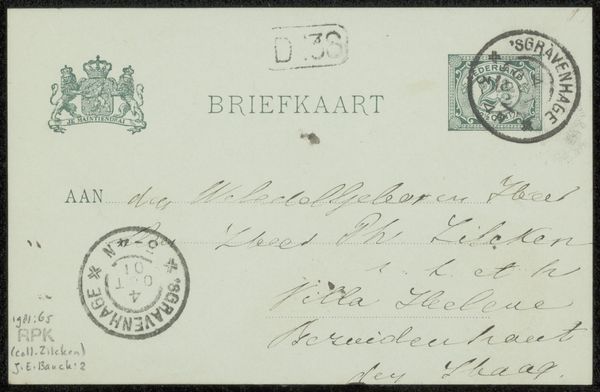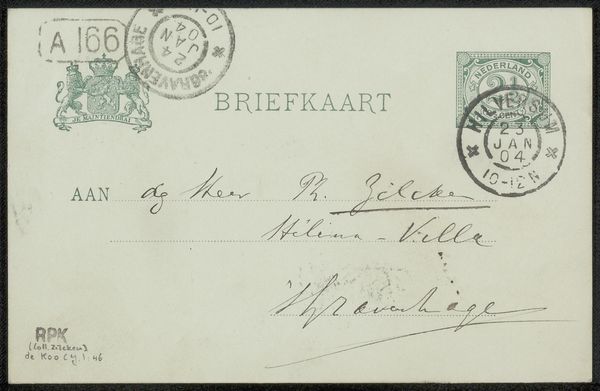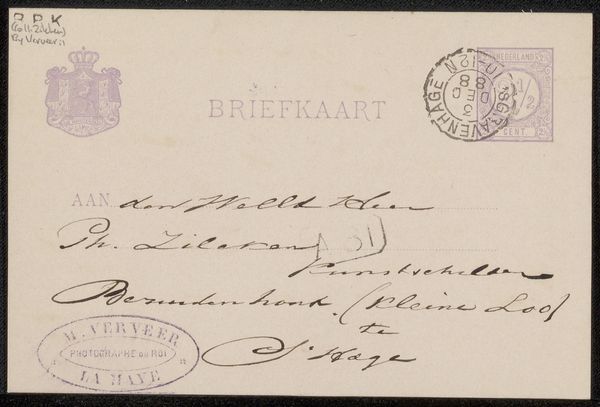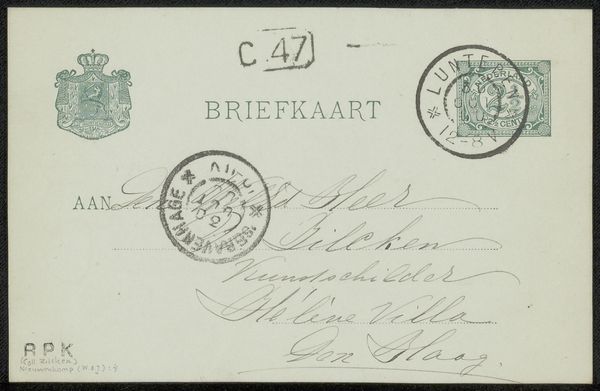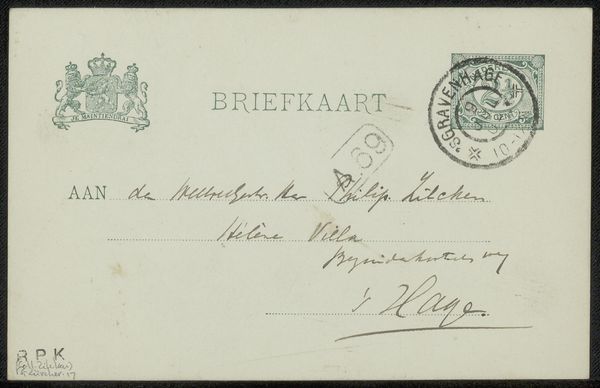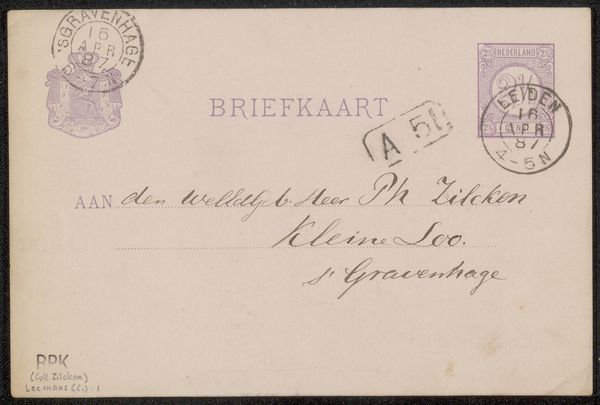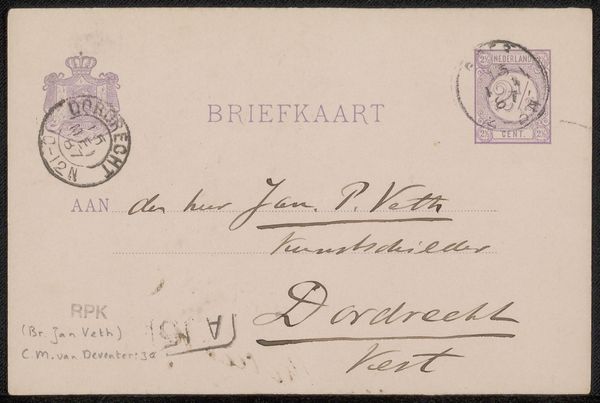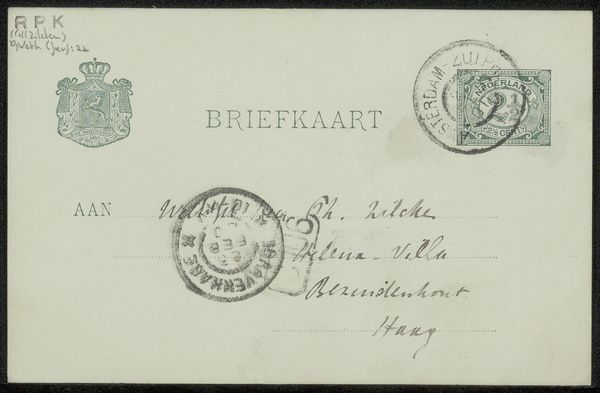
drawing, paper, ink, pen
#
portrait
#
drawing
#
ink drawing
#
pen sketch
#
paper
#
personal sketchbook
#
ink
#
ink drawing experimentation
#
pen-ink sketch
#
pen work
#
sketchbook drawing
#
pen
#
watercolour illustration
#
storyboard and sketchbook work
#
sketchbook art
#
calligraphy
Copyright: Rijks Museum: Open Domain
Editor: So, here we have "Briefkaart aan Philip Zilcken," potentially from 1904, by Herman Johannes van der Weele. It seems to be primarily ink on paper. It's essentially a postcard, and it feels so ordinary and ephemeral. What stands out to you about it? Curator: It's precisely that ephemerality, the raw, direct materiality of this postcard that captivates me. Notice the traces of handling, the imperfections in the ink, the utilitarian quality of the paper. This wasn't intended as high art, but rather a functional object, circulating within a network of communication and exchange. How does this affect its artistic value? Editor: That’s interesting. I hadn't really considered its original purpose so much. How does the labor of production inform its interpretation? Curator: Absolutely. We have to consider the social context of its production and consumption. A hand-written postcard in 1904 speaks to a particular moment in history, before mass digital communication. It speaks volumes of slower, more deliberate interactions, hinting also at class dynamics, literacy levels and the physical infrastructure that enabled it: paper mills, printing presses and postal networks. What labour do we see embedded in its physicality? Editor: I suppose the handwriting itself. Someone, likely van der Weele himself, carefully inscribing the message. And the printing of the postcard template itself. I didn’t really see that labor when I looked at it initially. Curator: Precisely! And it forces us to rethink the art object. This card wasn't created to exist statically on a gallery wall; its existence is predicated on movement, use, and interaction. It challenges this idea of a masterpiece created by a solitary genius. Editor: So, looking beyond the aesthetic and thinking about the material and its journey changes everything! Curator: It offers a radical alternative to conventional artistic appreciation, indeed. By tracing its materiality and understanding its function, we expose larger systems of production, labor, and communication. Editor: That gives me so much to think about. I will never look at a postcard in the same way!
Comments
No comments
Be the first to comment and join the conversation on the ultimate creative platform.



